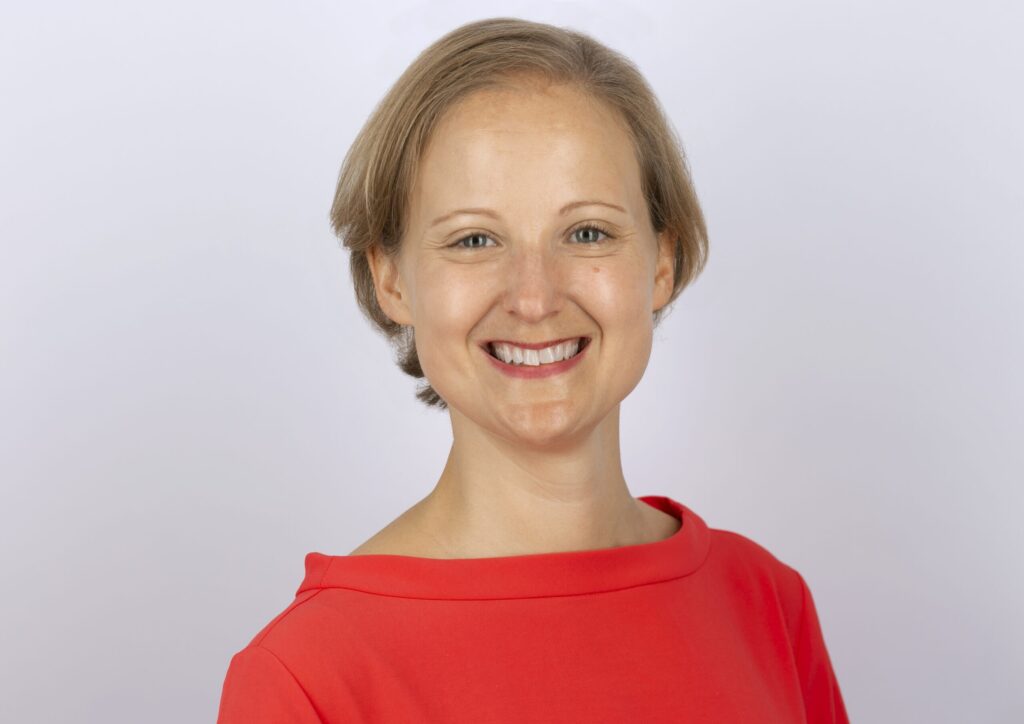
PaySpace Magazine met with Dora Ziambra, COO of Azimo, at Money20/20 Europe, the biggest fintech event, that took place in Amsterdam in September 2021 to talk about trends in digital payments, future expansion in Europe, and future of fintech.
For the beginning, tell us about your company. What clients do you have? What solutions do you offer?
Azimo is a digital cross-border payments company. Consumers are our primary focus but we work with small businesses as well. We joined the fintech wave very early on, almost eight years ago and we share the same belief as most other fintechs – the old models don’t work anymore, things can be done much faster and cheaper with the use of technology When it came to cross border payment offerings, we recognised that the traditional model of going to a shop and talking to an agent was no longer fit for purpose – it was expensive and inefficient. Nowadays, everybody has a mobile phone, and you can get much better service in terms of speed and price by using a digital product.
Azimo was initially launched to European customers, first from the UK and then from Europe but we’ve also now launched sending from Australia, Canada, and Hong Kong soon. Customers download the app or use the web and then they can send money around the world. We cover more than 180 countries, with transactions crossing the globe, from people in Spain sending money to South America to people in the UK sending money to Southeast Asia. Our transactions mirror migratory patterns around the world.
In terms of payout methods, we try to be agnostic and offer every payment method that our customers want. So we not only send to bank accounts but also offer cash pickup and mobile wallets. Our consumers use us because we offer a very fast and very cheap service. Around 70% of our transactions are delivered in under 1 hour, whilst we charge a total fee of around 2% which is 6% less than the global average, as reported by the World Bank. All in all, we provide reliability, speed, and a very competitive price.
What countries do people send money to most often?
It depends on the sending market. For Azimo, from the UK money is sent mostly to Eastern Europe and Asia, like Pakistan, Philippines. . From France, people send more to Morocco and Colombia, and from Germany, it mainly goes to Thailand and the Philippines.
What about Ukraine? Do you cover our country?
There’s a very large Ukrainian diaspora in many European countries and so we have just launched a new service for them soon. We anticipate that this will be particularly interesting to Ukrainians living in Poland and the UK. These countries are where the biggest opportunity is for us to grow in terms of remittances to Ukraine. The new service is in cooperation with PrivatBank – It allows customers to send money to a PrivatBank bank account with just the recipient’s mobile number and the last four digits of the card, so you don’t have to use the IBAN and the delivery is within a few minutes.
Will Ukrainians be able to send money abroad?
Ukrainians living abroad in countries where Azimo is regulated will be able to send to Ukraine, but not to receive from there. Currently, we don’t have a license for people to remit from Ukraine.
Do you need any partners in Ukraine to launch money transfers to Ukraine?
Yes. Our partner is Privatbank. We also have two Ukrainian investors who are very supportive of our launch in Ukraine.
Speaking about investors. Are you still a startup?
We are venture-backed and a growth company. We have almost 200 people now so we’re not considered a startup anymore, but we’ve still got a lot of growth ahead of us!
But you started as a startup. How did you become a successful fintech startup?
We focus on two things.
The first is our customers. We aim to build a product that people like to use, and it’s not surprising that our biggest marketing channel is actually referrals. The best marketing is when a customer is using Azimo’s service and then tells their friend to use us as well. More than 40% of our customers come through referrals. And we try to focus on the details that are not obvious to the customers. Customers should not find it hard to send money and we strive to make sure that they don’t, both in speed and price. Azimo is always putting the customer first and addressing their needs.
The remittance market has and continues to change. We started by offering cash pickup, in addition to bank deposits. We still offer them, but the customers potentially no longer want cash pickup, they want something else, they want the money in their account, they don’t care about picking up cash. So you need to know what the customer wants and to build a product to meet those wants in the right way.
The second thing that has been important to be a successful fintech company is scalability. We have focused on building a scalable platform, expanding our network and acquiring more customers by leveraging technology.
Are the services for international money transfers safe? How to ensure their safety?
Trust is a big thing, and I think we need to remember that technology makes our service both safe and useful. It’s safer to check someone’s ID in a digital way. If you show me a fake passport, I’m not sure I can 100% identify that it’s a fake. But technology can.
We use different ways of customer identification that you don’t even realise is running in the background. It is really important that we operate a service that works to protect against money laundering and terrorist financing. So we do real-time checks against all the lists that have some sanctions that the banking industry cares about.
The third is ongoing transaction monitoring. It is safe because you do verification on your card, you secure customer authentication, all of these things that are embedded in the product, what makes it safe. And of course, we are regulated. So we have to comply with all of the regulations.
What products do you propose to businesses?
We offer the same service but because of the stringent regulations we are required to ask for more information during the onboarding process, also known as KYV. But it’s the same service because they are usually sole traders, or smaller companies that either have employees abroad or pay, let’s say, engineers or developers in India, for example, the customer of customers who buy supplies made in China. And, usually, these customers tend to use their bank and their bank is quite expensive; banks use the SWIFT network which comes with very high fees and quite often unknown delivery times.
What is the most difficult thing about scaling a business?
It’s challenging to build trust, it takes time. You have to be on top of your product. As you said, you ask “is my money safe?” In scaling a business the thing is always prioritizing. You’re trying to achieve scale quickly but that means you have to manage resources at the same speed.
What will money transfers of the future look like?
For sure they will be digital. Right now it’s been mobile to mobile and people have this anticipation of being as seamless and as instant as possible. There’s still a high percentage of people who still go offline, and there’s also a grey market of things that are not recorded. But I only see one direction which is digital and more mobile on both ends, the sender and the recipient. And potentially creating even more cross-border transactions.
I’m not advocating that we shouldn’t have regulation but it doesn’t make it as easy. We all know the plans of Facebook and Diem and it’s a very ambitious goal, it just needs more requirements and that’s why it has only just launched in beta from the USA to Guatemala.
Can money transfers become free of charge someday for users?
I would say yes in the utopian world we should be moving money like data, like it’s the internet, but I don’t think we’re there, unfortunately, because of the risks that come with moving it – that requires compliance.
What will the customer of the future look like?
The customer should be able to move the money as easily as they send a text message. I think the customer will still demand the best service possible. And I don’t see any other way but to move away from cards. People seem to have stopped using plastic cards.
What are your plans for the near future?
We’re definitely looking for product extensions, but it’s not something I can be specific about.
What are the top trends in fintech?
In money transfers it’s speed. Now everybody’s focusing on how fast you can get there. Seamless service is equally important.
Banking and cards is a big thing – you’re not using cards connecting your bank account and then going to the payment flow through that. The main sponsors of Money20/20 are companies that offer open banking. The card is going to die. We used to say that cash is dead, now it’s like the card is dead. There’s a lot of mobile wallets out there, like Apple Pay and M-Pesa that make the card obsolete. Embedded finance is something that you’ll also hear a lot about because a lot of B2B companies are focusing on it.
Embedded finance has been the second most talked about topic at Money20/20. By embedded finance we mean the use of financial tools or services — such as lending or payment processing — by non-financial providers. We will see more and more in this space and a less clear division between financial services and non-financial services providers.
SEE ALSO:









